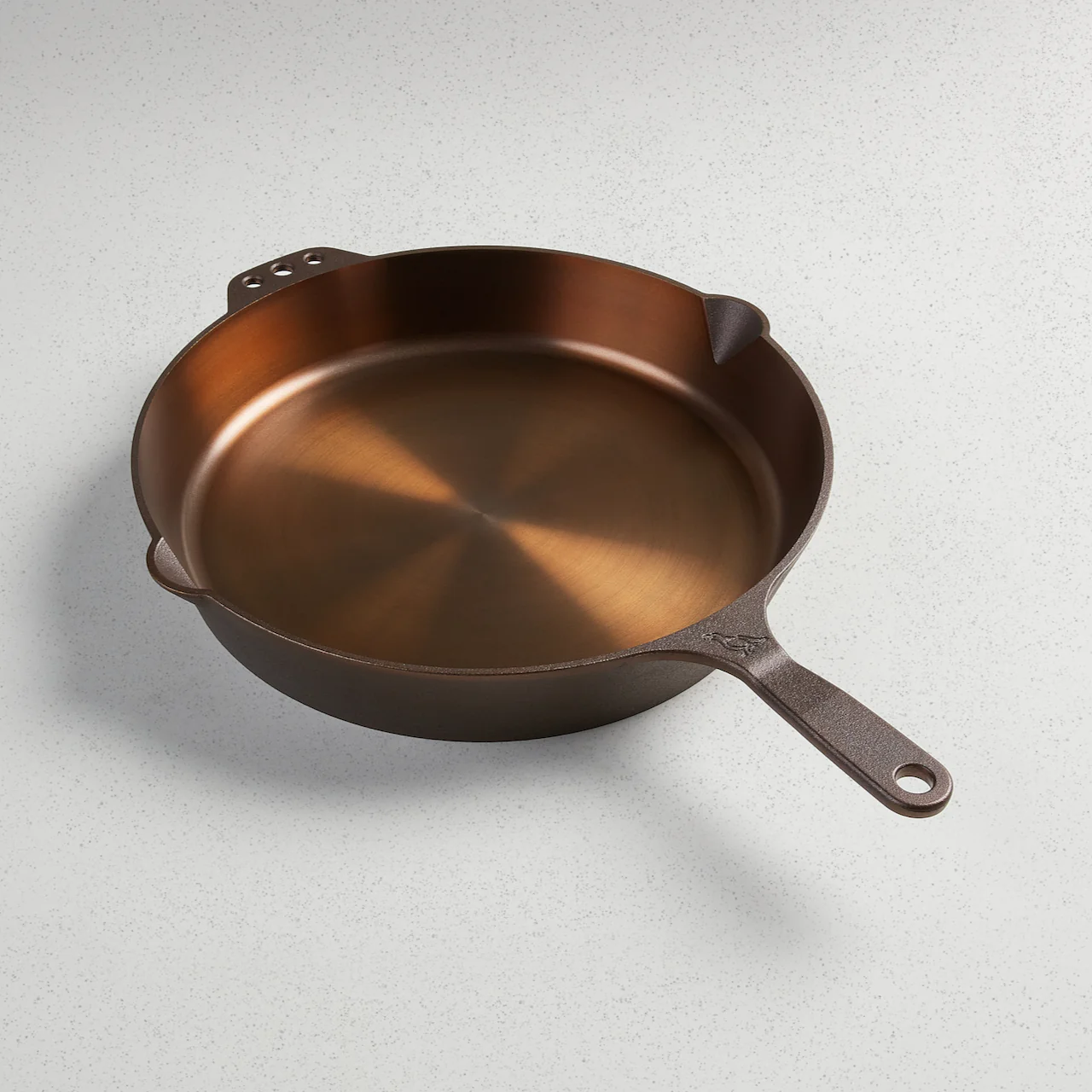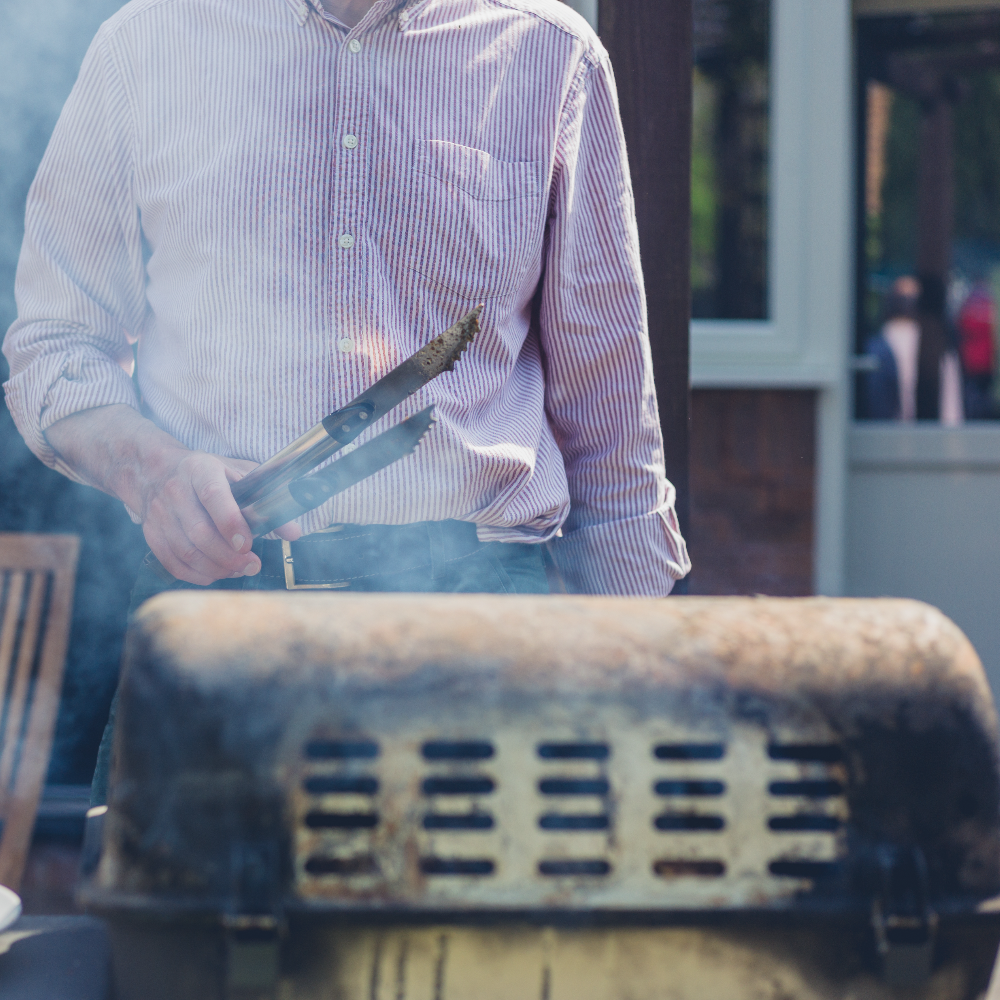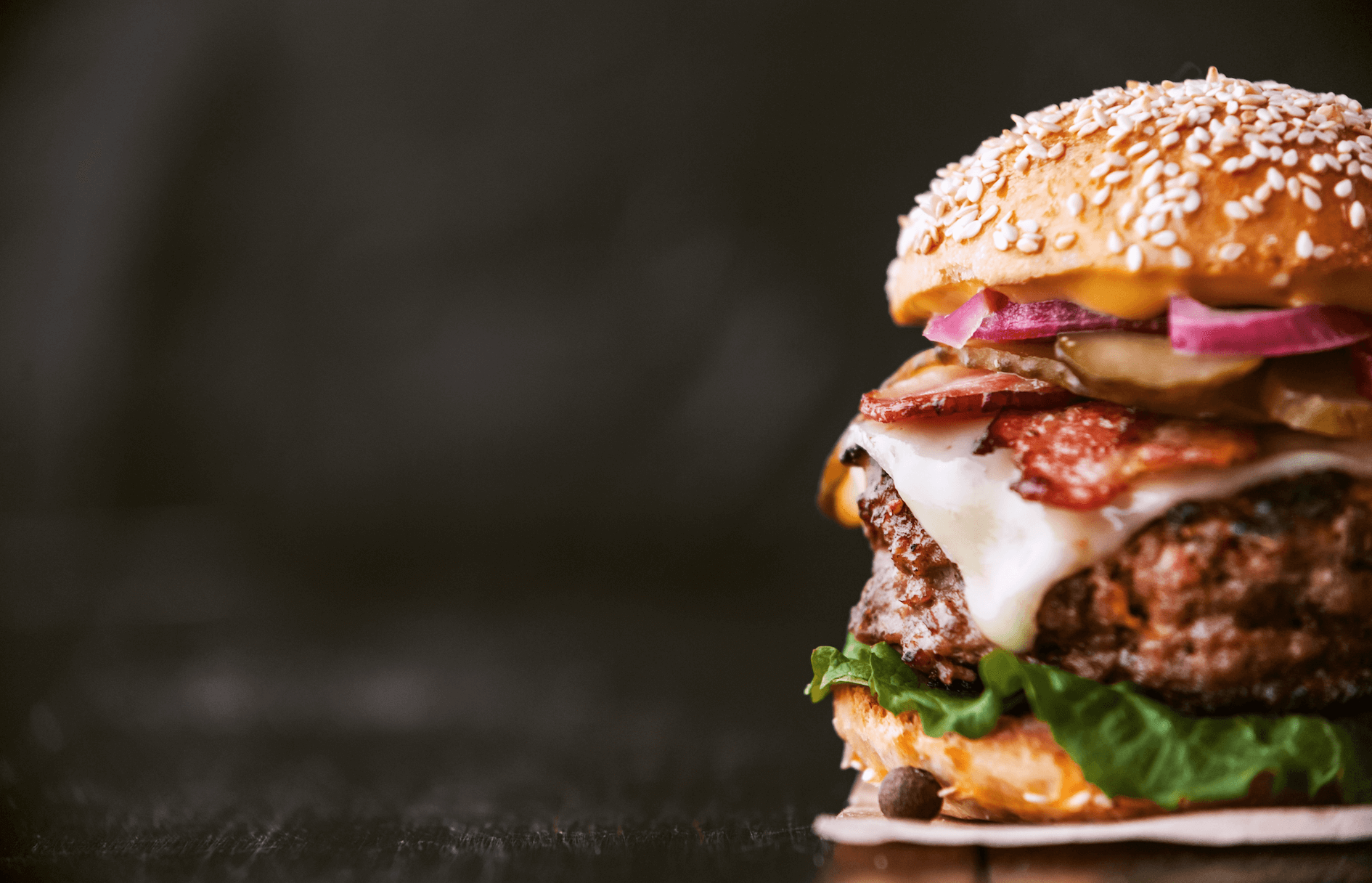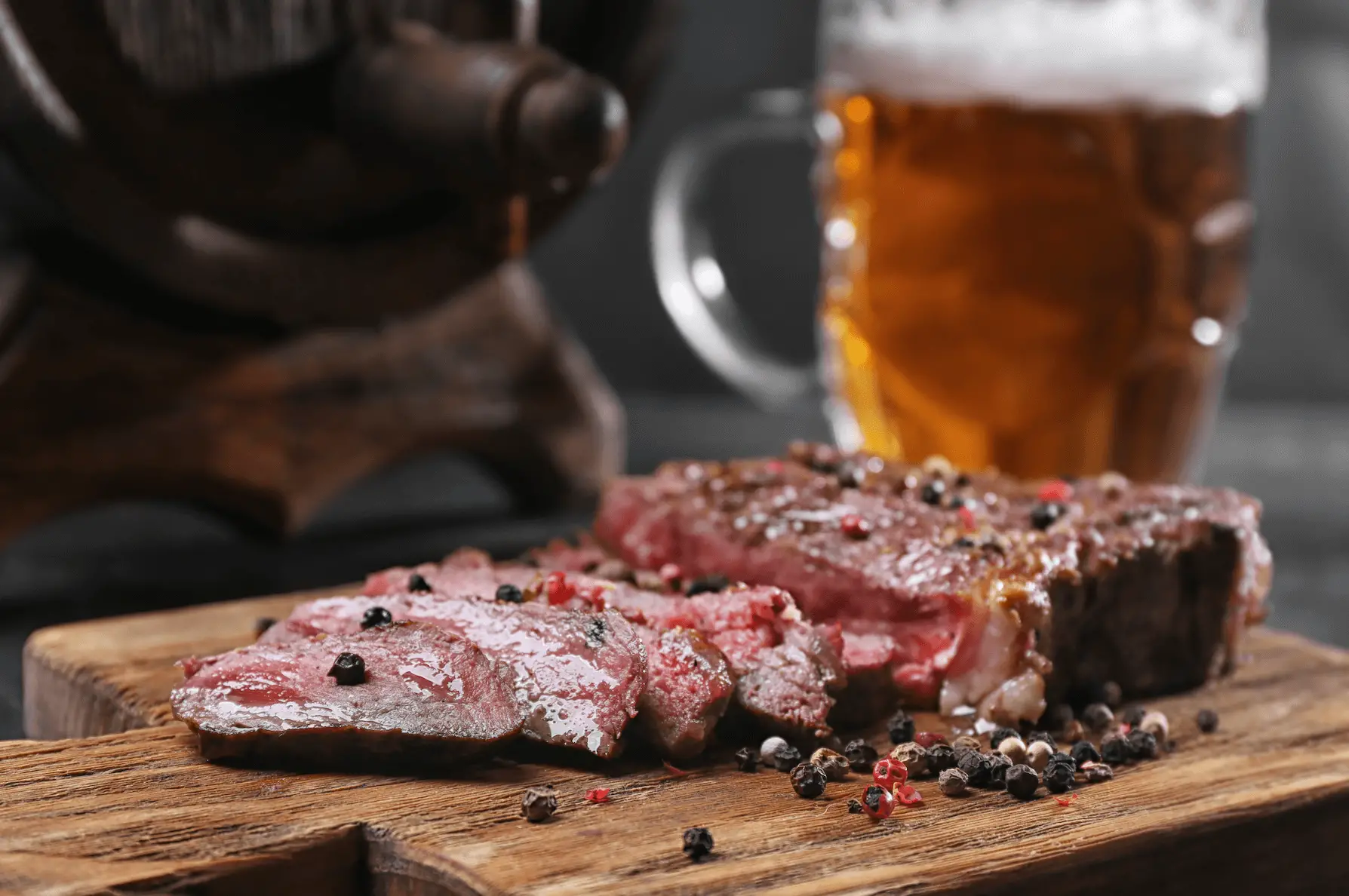Have you ever heard of blue steak? The term originally comes from France, where the act of quickly searing the outside while keeping interior very rare, makes the steak look almost purplish (and thus blue) in color. You may have also heard it referenced as “Pittsburgh rare“, or “Chicago-style Rare” but it’s all the same. It’s the ultimate test for any meat lover looking to experience beef flavor at its purest. If you appreciate the rich taste and tender texture of high-quality beef, trying a blue rare steak at least once should be on your culinary bucket list.
In this comprehensive guide, we’ll cover everything you need to know about blue steak, including how to prepare it at home, what cuts of meat to choose, and answers to frequently asked questions.
What is Blue Steak?
Blue steak, also known as blue rare steak, is a steak that is lightly seared on the outside while remaining very rare on the inside. It’s cooked quickly at extremely high heat for a very brief period—typically just 30-60 seconds per side—to lock in flavors and maintain tenderness. The result is a steak with a warm, lightly seared exterior and a cool, almost raw interior that showcases the pure taste of beef.
If you’re intrigued by unique culinary experiences and love steak, trying blue steak offers an exciting way to enjoy beef in its most authentic form.
https://www.youtube.com/watch?v=VmOC6c4d2h4
Why is it Called Blue Steak?
Despite its name, blue steak isn’t actually blue. The term originated in France, where the steak is known as “bleu,” meaning “blue.” This name comes from the quick searing method, which leaves the interior of the steak very rare, appearing almost purplish or deep red in color.
The term “blue” has remained popular, though the steak’s actual appearance is far from blue, resembling more of a vibrant red hue than anything else.
How to Cook Blue Steak
Cooking blue steak requires precise timing and high heat. Here’s the step-by-step process to ensure a perfect result every time:
Blue Steak Cooking & Temperature Guide
- Choose High-Quality Lean Steak: Opt for steaks at least 1½ inches thick, ensuring even cooking. High-quality cuts like filet mignon or flat iron steaks work best. You should check out our guide to the best mail order steaks, like Snake River Farms, Porter Road and Certified Piedmontese. Often it can be hard to find a local butcher that stocks quality cuts, but these online services are highly reputable and offer a wide variety of cuts to meet your needs.
- Seasoning: Generously season both sides of your steak with coarse kosher salt and freshly ground black pepper. Allow the seasoned steak to rest at room temperature for at least 30 minutes before cooking to enhance flavor.
- Preheat Your Grill or Skillet: If grilling, preheat your grill on high heat for 15-20 minutes. Alternatively, if using a cast iron skillet, heat it on high for 5 minutes. You can lightly oil the cooking surface with olive oil to prevent sticking.
- Sear the Steak: Place the steak on the hot cooking surface. Cook for just 30-60 seconds on each side, including edges, depending on thickness. Aim for an internal temperature of around 120°F to maintain a true blue rare finish without surpassing 130°F.
- Rest Briefly: Once cooked, remove your steak and let it rest briefly (1-3 minutes) to redistribute juices. Keep the resting period short to avoid overcooking.
- Slice and Serve: Slice against the grain for maximum tenderness and serve immediately.
Best Steak Cuts to Choose From
Selecting the right steak cut is essential when cooking blue rare. Lean, tender cuts perform best because they cook evenly and quickly.
Recommended Cuts:
- Filet mignon (we think Certified Piedmontese has some of the best filet on the market)
- Flat iron steak
- Sirloin tip
- Flank steak
Cuts to Avoid:
Avoid fatty or heavily marbled cuts, as the fat won’t have sufficient time to melt and tenderize during the quick sear, leading to an inconsistent texture. Generally speaking, that means staying away from an American A5 Wagyu filet, and hence why we recommend a Certified Piedmontese filet instead, given their leaner texture, but still packed with flavor.
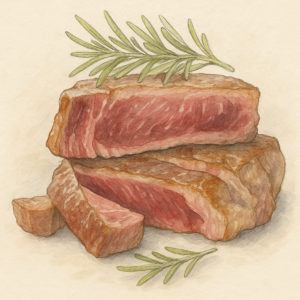
Is Blue Steak Safe to Eat?
Yes, blue steak is safe to eat if handled and cooked correctly. While the steak is very rare, proper preparation significantly reduces any risk.
Safety Tips:
- Buy steaks from reputable, trusted suppliers like Snake River Farms, Porter Road and/or Certified Piedmontese.
- Use sanitized cooking surfaces.
- Verify internal temperature with a meat thermometer.
Ensuring these measures are followed guarantees both safety and maximum enjoyment of your blue steak experience.
Are Blue Steak and Rare Steak the Same?
No, blue steak and rare steak differ slightly. Blue steak is seared very briefly, approximately 30-60 seconds per side, maintaining an almost raw interior. A rare steak, on the other hand, cooks slightly longer—about 2-3 minutes per side—providing a warmer, yet still rare, center. Both steaks showcase excellent beef flavor, with blue steak being the cooler, rawer option.
What is a Pittsburgh Steak?
A Pittsburgh steak, also known as black and blue steak, involves an intense charring on the exterior while the interior remains rare. Originating from Pittsburgh’s steel mill culture, this method involves extreme heat to create a blackened crust, offering an appealing contrast between charred exterior and rare, juicy interior.
Frequently Asked Questions
Is blue steak chewy? Blue steak is typically very tender when prepared correctly, though it might feel slightly chewier than medium-rare steak. Quick cooking preserves tenderness, emphasizing the quality of the meat.
Can all steak cuts be cooked blue rare? Not all cuts are suitable. Lean, tender cuts like filet mignon and flat iron steak are best. Avoid fatty or marbled cuts, as the quick cook won’t adequately render fat.
What temperature should blue steak be cooked to? Blue steak should reach an internal temperature of approximately 120°F. This ensures the steak remains safely edible and retains its unique texture and flavor.
Do restaurants commonly serve blue steaks? Most upscale steak restaurants can prepare blue steaks upon request, though it’s not usually listed explicitly on menus. Always ask your server to confirm availability.
Is blue steak healthier than well-done steak? Both have similar nutritional values. However, some studies suggest that less-cooked meats may retain more nutrients, such as vitamin B12 and iron.
What’s the best way to get a hot, quick sear on a blue steak? Make sure you use a really hot cast iron that has been pre-heated on the grill for some time. That will ensure you are ready for the quick sear needed to achieve the result you want. We highly recommend both Lodge cast iron skillets as well as Smithey Ironware skillets, especially if you are looking for heirloom quality cookware that you want to pass down to the next generation.
Satin-smooth, polished finish with a traditional handle. You can get it engraved, which makes a perfect gift.
Discover more from Own The Grill
Subscribe to get the latest posts sent to your email.


